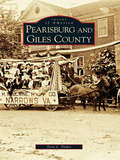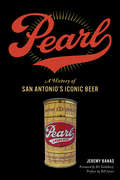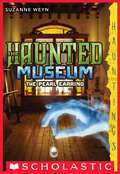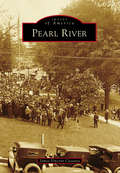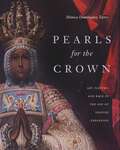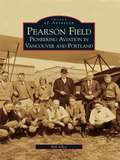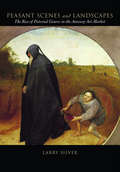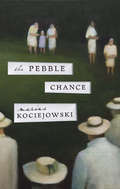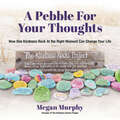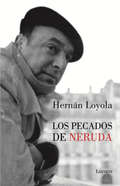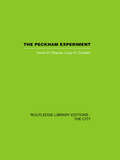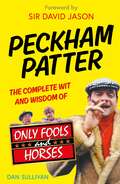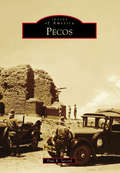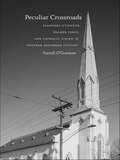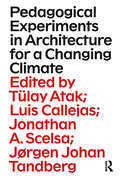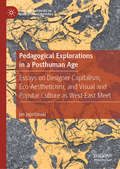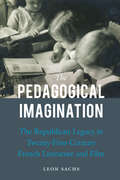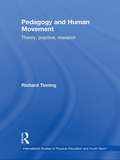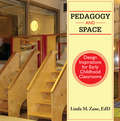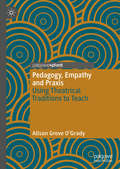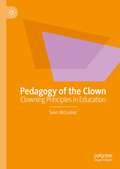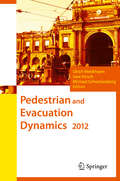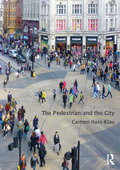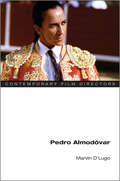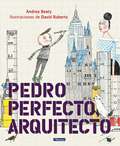- Table View
- List View
Pearisburg and Giles County
by Terri L. FisherSoon after Giles County was formed in 1806, George Pearis offered 53 acres, lumber, and stone to build the first courthouse. The building was constructed, and Pearisburg was established in 1808 at the geographic center of the county. The original courthouse was replaced in 1836 with the current brick structure that has been recently renovated and is still in use today. Giles County's story is one of water crossings and floods, agriculture, industrial development, railroads, tourism, and distinct communities isolated by the mountains and water. Natural resources, including mountains, springs, creeks, limestone cliffs, and 37 miles of the New River in Giles County, have shaped the settlement, industry, transportation, commerce, recreation, and tourism of the area. Photographs of life in each of these small communities depict the varied history of Giles County and those who have been drawn to this place.
Pearl: A History of San Antonio's Iconic Beer
by Jeremy Banas Kit Goldsbury Bill Jones"The finest flavored beer in the market. Be sure and try, and you will be convinced. Warranted to be the same at all times. Ask for it, drink no other." In 1887, these were bold words about the City Brewery's new beer with the pearly bubbles, considering how the recent flood of German immigrants to Central Texas brought along expert fermentation. As that business evolved into the San Antonio Brewing Association, XXX Pearl Beer became the mainstay of the largest brewery in the state. Its smokestack formed an intrinsic part of the San Antonio skyline. A regional powerhouse for more than a century, it was the only Texas brewery to survive Prohibition. It also endured the onslaught of a president's scandalous death and Lone Star's fierce rivalry. Grab a pint and join author Jeremy Banas for a tour of Texas's most iconic brewery.
The Pearl Earring: The Pearl Earring (The Haunted Museum #3)
by Suzanne WeynTouching a painting sends a girl on a suspenseful adventure in this spooky tale by the author of The Phantom Music Box.Don’t touch anything in the Haunted Museum!When Lily accidentally touches a painting at The Haunted Museum, she’s pulled into a dangerous fight for her life! The more she learns about the history of the portraits she’d been mesmerized by, the more she finds about the artist who painted them and the girls in the paintings. All the girls seem to have disappeared—but where? Tears on the portraits, dreams about the girls in the pictures—what could it mean? And what happens to Lily if her portrait is painted?Praise for The Titanic Locket“Hair-raising. . . . Weyn keeps unexpected chills coming. . . . A quick, jittery read.” —Publishers Weekly“Weyn ratchets up the eeriness . . . and quickly builds to a stormy climax.” —Kirkus Reviews
Pearl River (Images of America)
by James Vincent CassettaPearl River was part of a royal land patent issued to two New York businessmen, Daniel Honan, the accountant general of New Amsterdam, and Michael Hawdon, a friend of the infamous Captain Kidd. Immigrants later settled in areas they called Nauraushaun, Middletown, Pascack, Sickletown, Orangeville, and Muddy Brook. In the 1870s, Julius Braunsdorf permitted the New York & New Jersey Railroad to run an extension through his property, which gave his new sewing machine factory access to markets and materials. The factory would later be enhanced to produce the first newspaper-folding machines. In 1906, Dr. Ernst Lederle, a former New York health commissioner, began a laboratory to produce antitoxins and other medicines. With the success and growth of these inventors and their businesses, Pearl River became a nationally known company town. Since the opening of the Tappan Zee Bridge, it has evolved into a friendly, modern bedroom community of New York City and the second-largest hamlet in New York State.
Pearls for the Crown: Art, Nature, and Race in the Age of Spanish Expansion
by Mónica Domínguez TorresIn the age of European expansion, pearls became potent symbols of imperial supremacy. Pearls for the Crown demonstrates how European art legitimated racialized hierarchies and inequitable notions about humanity and nature that still hold sway today.When Christopher Columbus encountered pristine pearl beds in southern Caribbean waters in 1498, he procured the first source of New World wealth for the Spanish Crown, but he also established an alternative path to an industry that had remained outside European control for centuries. Centering her study on a selection of key artworks tied to the pearl industry, Mónica Domínguez Torres examines the interplay of materiality, labor, race, and power that drove artistic production in the early modern period. Spanish colonizers exploited the expertise and forced labor of Native American and African workers to establish pearling centers along the coasts of South and Central America, disrupting the environmental and demographic dynamics of their overseas territories. Drawing from postcolonial theory, material culture studies, and ecocriticism, Domínguez Torres demonstrates how, through use of the pearl, European courtly art articulated ideas about imperial expansion, European superiority, and control over nature, all of which played key roles in the political circles surrounding the Spanish Crown.This highly anticipated interdisciplinary study will be welcomed by scholars of art history, the history of colonial Latin America, and ecocriticism in the context of the Spanish colonies.
Pearson Field: Pioneering Aviation in Vancouver and Portland (Images of Aviation)
by Bill AlleyPearson Field, part of the Vancouver National Historic Reserve, is one of the oldest continually operating airfields in the United States. From the first arrival of an airship in 1905 and the flying of a plane off the Multnomah Hotel in 1912, Pearson has achieved numerous aviation milestones. The first official interstate airmail landed here in 1912, and during World War I it was the site of the world's largest spruce mill. Pearson was selected to serve as Portland's first airmail terminal, and two of America's most notable women pilots--Dorothy Hester and Edith Foltz--first took to the skies from the bustling Vancouver field. Pearson was also in the world spotlight when the 1937 Soviet transpolar flight landed in 1937. After 100 years, Pearson continues to serve as one of the region's preeminent general aviation centers.
Peasant Scenes and Landscapes
by Larry SilverModern viewers take for granted the pictorial conventions present in easel paintings and engraved prints of such subjects as landscapes or peasants. These generic subjects and their representational conventions, however, have their own origins and early histories. In sixteenth-century Antwerp, painting and the emerging new medium of engraving began to depart from traditional visual culture, which had been defined primarily by wall paintings, altarpieces, and portraits of the elite. New genres and new media arose simultaneously in this volatile commercial and financial capital of Europe, home to the first open art market near the city Bourse. The new pictorial subjects emerged first as hybrid images, dominated by religious themes but also including elements that later became pictorial categories in their own right: landscapes, food markets, peasants at work and play, and still-life compositions. In addition to being the place of the origin and evolution of these genres, the Antwerp art market gave rise to the concept of artistic identity, in which favorite forms and favorite themes by an individual artist gained consumer recognition.In Peasant Scenes and Landscapes, Larry Silver examines the emergence of pictorial kinds--scenes of taverns and markets, landscapes and peasants--and charts their evolution as genres from initial hybrids to more conventionalized artistic formulas. The relationship of these new genres and their favorite themes reflect a burgeoning urbanism and capitalism in Antwerp, and Silver analyzes how pictorial genres and the Antwerp marketplace fostered the development of what has come to be known as "signature" artistic style. By examining Bosch and Bruegel, together with their imitators, he focuses on pictorial innovation as well as the marketing of individual styles, attending particularly to the growing practice of artists signing their works. In addition, he argues that consumer interest in the style of individual artists reinforced another phenomenon of the later sixteenth century: art collecting. While today we take such typical artistic formulas as commonplace, along with their frequent use of identifying signatures (a Rothko, a Pollock), Peasant Scenes and Landscapes shows how these developed simultaneously in the commercial world of early modern Antwerp.
The Pebble Chance
by Marius Kociejowski"Here the charm is deep, the splendour unlaboured; the colours of history, reckoned afresh, saturate singular people, in whom passion is lucid again...here is one who collects his extraordinary resources, and strides."-Christopher MiddletonIn the game of bocce, no matter how intensely you study the world's surface, there is always a chance an unseen pebble will knock your ball in an unexpected direction. In these essays, poet, antiquarian bookseller, and celebrated travel writer Marius Kociejowski chronicles serendipitous encounters with authors, manuscripts, and eccentrics, in which "the curious workings of fate" and "art's unbidden swerve" intervene to shift the course of fortune.Carried by keen wit, aphoristic prose, and a rich sense of characterization, and featuring chance meetings and comic misadventures with such figures as Bruce Chatwin, Zbigniew Herbert, and Javier Marías, The Pebble Chance is a sumptuous offering of belles lettres exploring the incandescent moments when skill and providence collide."It is a testament to the power of this superb book that I felt not despondency, but ... elation."-Adam Thorpe, The Times Literary Supplement"Treasures are revealed ... with a formidable erudition, and at their best they gleam with an enameled splendour."-Ken Babstock, The Globe and Mail"Kociejowski writes beautifully ... unusual, poetic, and thought-provoking."-Library Journal
A Pebble for Your Thoughts: How One Kindness Rock At the Right Moment Can Change Your Life
by Megan Murphy#1 New Release in Rocks & Minerals - Kindness Rocks as seen on the Today showFans of The Kindness Challenge and the Chicken Soup For The Soul books will love A Pebble for Your Thoughts.A rock for each kindness. It all started with a single stone on a beach in Cape Cod and now spans the globe. The Kindness Rocks Project, founded by Megan Murphy, is based on the profound truth that one kind message at the right moment can change someone’s day, their outlook, and their whole life. The project has become an international grassroots movement! The messages on these thoughtful pebbles take many forms: gratitude, affirmations, encouragement, offers of hope, all signposts along the way for someone to find at exactly the right time.Kindness matters. Now more than ever, people are longing for kindness and connection. During these uncertain times, daily news reports focus on disturbing events of terrorism, gun violence, senseless murders and political bickering. We are bombarded with images that evoke fear and hostility. A Pebble for Your Thoughts provides a positive counteraction to all this negativity.Learn to be kinder to yourself and others. Sometimes, all it takes is just one simple positive message to change your perspective and that is what this book aims to do. Through visual photos of inspirational Kindness rocks, readers can connect the meaning of the rock to their life situations or circumstances. Instructions on how to create your own rock are also included.What people will learn from this book:How to cultivate compassion and connectionHow to grow through hard timesAffirmations to boost self-esteem and offer hope in hard timesHow one act of kindness can change a lifeA completely unique kind of art therapy for healing and helpingThe power of kindness in one small pebble
Los pecados de Neruda
by HERNAN LOYOLAEl libro que se hace cargo de los pecados bajo los que se han visto envueltas en los últimos años la figura y la obra de Pablo Neruda. Breve y consistente ensayo biográfico de la pluma del gran nerudiano Hernán Loyola, en donde aborda las polémicas póstumas en que se han visto envueltas la obra y figura de Neruda. En ocho capítulos, ocho pecados, Loyola aborda, enfrenta y encara cada una de estas polémicas: el poeta inútil, el poeta machista, el poeta fabulador, el poeta violador, el poeta mal marido, el poeta mal padre, el poeta plagiario, el poeta insolente y el poeta abandonador.
The Peckham Experiment: A study of the living structure of society
by Innes H. Pearse Lucy H. CrockerFirst published in 2006. Routledge is an imprint of Taylor & Francis, an informa company.
Peckham Patter: The Complete Wit and Wisdom of Only Fools
by Dan SullivanFOREWORD BY SIR DAVID JASONAs Macbeth said to Hamlet in Midsummer Night's Dream, 'we've been done up like a couple of kippers - DelIn this pukka 42-carat gold-plated bargain, you have the wit and wisdom of Del Boy, Rodney, Albert, Boycie and Trigger at your disposal. Packed with all the funniest and most memorable lines from the classic British sit-com as it turns 40, this quote book is the crème de la menthe. Never be caught short again.Let's face it Del, most of your phrases come out of a Citroen manual - Rodney
Pecos
by Paul SecordThere is no greater range of history in New Mexico than that found within 15 miles surrounding the village of Pecos. This book explores the last 1,000 years of that history, which includes many cultures and events, such as Native Americans, Spanish explorers, a Civil War battle, the Santa Fe Trail, railroads, and Route 66, as well as miners, saloon keepers, archaeologists, tourists, important architects, and even Hollywood stars.
Peculiar Crossroads: Flannery O'Connor, Walker Percy, and Catholic Vision in Postwar Southern Fiction (Library of Southern Civilization)
by Farrell O'GormanIn Peculiar Crossroads, Farrell O'Gorman explains how the radical religiosity of both Flannery O'Connor's and Walker Percy's vision made them so valuable as southern fiction writers and social critics. Via their spiritual and philosophical concerns, O'Gorman asserts, these two unabashedly Catholic authors bequeathed a postmodern South of shopping malls and interstates imbued with as much meaning as Appomattox or Yoknapatawpha. O'Gorman builds his argument with biographical, historical, literary, and theological evidence, examining the writers' work through intriguing pairings, such as O'Connor's Wise Blood with Percy's The Moviegoer, and O'Connor's A Good Man Is Hard to Find with Percy's Lancelot. An impeccable exercise in literary history and criticism, Peculiar Crossroads renders a genuine understanding of the Catholic sensibility of both O'Connor and Percy and their influence among contemporary southern writers.
Pedagogical Experiments in Architecture for a Changing Climate
by Tülay Atak Luis Callejas Jonathan Scelsa Jørgen TandbergThis book presents a series of pedagogical experiments translating climate science, environmental humanities, material research, ecological practices into the architectural curriculum. Balancing the science and humanities, it exposes recent pedagogical experiments from renown educators, while also interrogating a designer’s agency between science and speculation in the face of climate uncertainty. The teaching experiments are presented across four sections: Abstraction, Organization, Building, and Narrative, exposing core parts of an architect’s education and how educators can simultaneously provide fundamental skills and constructive literacy while instigating environmental sensibilities. Chapters cover issues such as an unstable hydrosphere, water infrastructure, remediating materials, methods of disassembly and adaptive reuse, as well as constructing new aesthetic categories of climate change, and implementing oral histories of construction, among many others. Written and edited by expert design educators actively engaged in experimenting in new forms of pedagogy, this book will be of great use to architecture instructors at all levels looking to renew their teaching practices to more directly address the climate emergency. It will also appeal to those academics across the built environment interested in the ways design can affect and adapt to climate change.
Pedagogical Explorations in a Posthuman Age: Essays on Designer Capitalism, Eco-Aestheticism, and Visual and Popular Culture as West-East Meet (Palgrave Studies in Educational Futures)
by jan jagodzinskiThis book problematizes the role of education in an increasingly mediatized world through the lenses of creativity, new media, and consumerism. At the core of the issue, the author argues, creativity in art education is being co-opted to serve the purposes of current economic trends towards designer capitalism. Using an East meets West approach, jagodzinski draws on Deleuze and Guattarian philosophy to explore visual and popular culture in Korean society, addressing the tensions that exist between designer education and art that explores the human condition. In doing so, he challenges art educators to envision a new paradigm for education which questions established media ontologies and incorporates new ways to confront the crisis of the Anthropocene.
The Pedagogical Imagination: The Republican Legacy in Twenty-First-Century French Literature and Film
by Leon SachsFrench school debates of recent years, which are simultaneously debates about the French Republic’s identity and values, have generated a spate of internationally successful literature and film on the topic of education. While mainstream media and scholarly essays tend to treat these works as faithful representations of classroom reality, The Pedagogical Imagination takes a different approach. In this study of French education and republicanism as represented in twenty-first-century French literature and film, Leon Sachs shifts our attention from “what” literature and film say about education to “how” they say it. He argues that the most important literary and filmic treatments of French education in recent years—the works of Agnès Varda, Érik Orsenna, Abdellatif Kechiche, François Bégaudeau—do more than merely depict the present-day school crisis. They explore questions of education through experiments with form.The Pedagogical Imagination shows how such techniques engage present-day readers and viewers in acts of interpretation that reproduce pedagogical principles of active, experiential learning—principles at the core of late nineteenth-century educational reform that became vehicles for the diffusion of republican ideology.
Pedagogy and Human Movement: Theory, Practice, Research (Routledge Studies in Physical Education and Youth Sport)
by Richard TinningAcross the full range of human movement studies and their many sub-disciplines, established institutional practices and forms of pedagogy are used to (re)produce valued knowledge about human movement. Pedagogy and Human Movement explores this pedagogy in detail to reveal its applications and meanings within individual fields. This unique book examines the epistemological assumptions underlying each of these pedagogical systems, and their successes and limitations as ways of (re)producing knowledge related to physical activity, the body, and health. It also considers how the pedagogical discourses and devices employed influence the ways of thinking, practice, dispositions and identities of those who work in the fields of sport, exercise and other human movement fields. With a scope that includes physical education, exercise and sports science, sports sociology and cultural studies, kinesiology, health promotion, human performance and dance, amongst other subjects, Pedagogy and Human Movement is the most comprehensive study of pedagogical cultures in human movement currently available. It is an invaluable resource for anybody with an interest in human movement studies.
Pedagogy and Space
by Linda ZaneThe intersection of architecture and education is a new and burgeoning area of interest. This book blends architectural design information with theory-based content explaining the foundations of early childhood environments. Colorful photographs of intentionally designed spaces will inspire early childhood professionals and architects alike as they dream, plan, build, and revamp settings. Inspired by the groundbreaking architectural book A Pattern Language: Towns, Buildings, Construction (Oxford University Press, 1977), this resource aims to glean architectural information regarding important design patterns in an environment and utilize them to provide insight into early childhood environments that are both developmentally appropriate and aesthetically pleasing.
Pedagogy, Empathy and Praxis: Using Theatrical Traditions to Teach
by Alison Grove O'GradyThis book examines the concept of empathy as an essential aspect of the teacher training curriculum, and asks how it can be taught. While there has been a steady flow of teacher education reform books in recent years, there are comparatively few that have considered change from understandings and advances developed in human rights-based practices and theatrical traditions. The author presents unique and compelling approaches to teacher training and learning, developed in conjunction with experts in theatrical and educational fields and combining both research and praxis. This pioneering book will appeal to students and scholars of education and empathy, as well as those interested in incorporating empathy into their teaching practice.
Pedagogy of the Clown: Clowning Principles in Education
by Sean McCuskerThis book discusses the tradition of clowning from an educational perspective, highlighting the resonant philosophies between the two professions and asking what one can learn from the other. Modern day clowning follows an age-old tradition, with a set of principles and beliefs expounded by proponents of the profession. Throughout the principles of clowning, themes of subversion, inversion, play and challenge recur. These same ideas have a place in the classroom, not as everyday practice but perhaps as a leitmotif. The book is therefore a call for educators to consider their position within the learning environment and to embody the clown spirit. By looking outside of traditional pedagogical thinking and training, this book demonstrates ideas and techniques from which educators can borrow or learn, allowing them to enhance their own methods and practices. It offers an opportunity to revisit the dynamics of the classroom through the recognition of the important role that the clown can play in society.
Pedestrian and Evacuation Dynamics 2012
by Ulrich Weidmann Uwe Kirsch Michael SchreckenbergThe 6th International Conference on Pedestrian and Evacuation Dynamics (PED2012) showcased research on human locomotion. This book presents the proceedings of PED2012. Humans have walked for eons; our drive to settle the globe began with a walk out of Africa. However, much remains to discover. As the world moves toward sustainability while racing to assess and accommodate climate change, research must provide insight on the physical requirements of walking, the dynamics of pedestrians on the move and more. We must understand, predict and simulate pedestrian behaviour, to avoid dangerous situations, to plan for emergencies, and not least, to make walking more attractive and enjoyable. PED2012 offered 70 presentations and keynote talks as well as 70 poster presentations covering new and improved mathematical models, describing new insights on pedestrian behaviour in normal and emergency cases and presenting research based on sensors and advanced observation methods. These papers offer a starting point for innovative new research, building a strong foundation for the next conference and for future research.
The Pedestrian and the City
by Carmen Hass-KlauThe Pedestrian and the City provides an overview and insight into the development, politics and policies on walking and pedestrians: it includes the evolution of pedestrian-friendly housing estates in the 19th century up to the present day. Key issues addressed include the struggle of pedestrianization in town centers, the attempts to create independent pedestrian footpaths and the popularity of traffic calming as a powerful policy for reducing pedestrian accidents. Hass-Klau also covers the wider aspects of urban and transport planning, especially public transport, essential for promoting a pedestrian-friendly environment. The book includes pedestrian-friendly policies and guidelines from a number of European countries and includes case studies from the UK, Germany, Britain, France, Spain, Italy, the Netherlands, Denmark, the US and Canada, with further examples from ten additional countries. It also contains a unique collection of original photographs; including ‘before’ and ‘after’ photos of newly introduced pedestrian-friendly transport policies. As the pedestrian environment has become ever more crucial for the future of our cities, the book will be invaluable to students and practicing planners, geographers, transport engineers and local government officers.
Pedro Almodóvar (Contemporary Film Directors)
by Marvin D'LugoPerhaps the best-known Spanish filmmaker to international audiences, Pedro Almodóvar gained the widespread attention of English-speaking critics and fans with the Oscar-nominated Women on the Verge of a Nervous Breakdown and the celebrated dark comedy Tie Me Up! Tie Me Down!. Marvin D'Lugo offers a concise, informed, and insightful commentary on a preeminent force in modern cinema. D'Lugo follows Almodóvar's career chronologically, tracing the director's works and their increasing complexity in terms of theme and the Spanish film tradition. Drawing on a wide range of critical sources, D'Lugo explores Almodóvar's use of melodrama and Hollywood genre film, his self-invention as a filmmaker, and his on-screen sexual politics. D'Lugo also discusses what he calls "geocultural positioning," that is, Almodóvar's paradoxical ability to use his marginal positions—in terms of his class, geographical origin, and identity—to develop an expressive language that is emotionally recognizable by audiences worldwide. Two fascinating interviews with the director round out the volume. An exciting consideration of an arthouse giant, Pedro Almodóvar mixes original interpretations into an analysis sure to reward film students and specialists alike.
Pedro Perfecto, Arquitecto (Los Preguntones)
by Andrea BeatyPero poca gente apreció su talento, en especial su maestra de segundo grado, la señorita Eva Delgado, que prohibió la arquitectura y los edificios de gran altura. A Pedro se le cayó el mundo a los pies y perdió todo interés… Hasta que, en una fatídica excursión, demostró lo práctica que puede ser una gran construcción.
